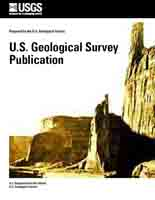
Geologic map of the Pompeii Quadrangle (MTM 20057), Maja Valles region of Mars
Links
- Plate: Plate 1 (11304 pdf)
- Data Release: USGS data release - Geologic map of the Pompeii Quadrangle (MTM 20057), Maja Valles region of Mars
- Download citation as: RIS | Dublin Core
Abstract
The Pompeii quadrangle is in the northern Maja Valles between Lunae Planum to the west and Xanthe Terra to the east (fig. 1). Approximately two-thirds of the surface is relatively smooth plains, and the other one-third is subdued, cratered, upland plateau. Several large (greater than 30 km in diameter) craters dominate the landscape. The crater Pompeii is the largest fresh crater in the quadrangle. The major interest in the map area is evidence of the relatively brief, catastrophic Maja outflow and its associated topographic modification of much of the area. The effects of erosion and deposition by the Maja flood are pronounced and are a chief part of the story; therefore, flood-modified terrain is divided in considerable detail. The stratigraphic units associated with the outflow are true rock units although they may be very thin.
| Publication type | Report |
|---|---|
| Publication Subtype | USGS Numbered Series |
| Title | Geologic map of the Pompeii Quadrangle (MTM 20057), Maja Valles region of Mars |
| Series title | IMAP |
| Series number | 2203 |
| DOI | 10.3133/i2203 |
| Year Published | 1992 |
| Language | English |
| Publisher | U.S. Geological Survey |
| Description | 1 Plate: 66.67 × 48.00 inches |
| Other Geospatial | Maja Valles, Mars |
| Scale | 502000 |

